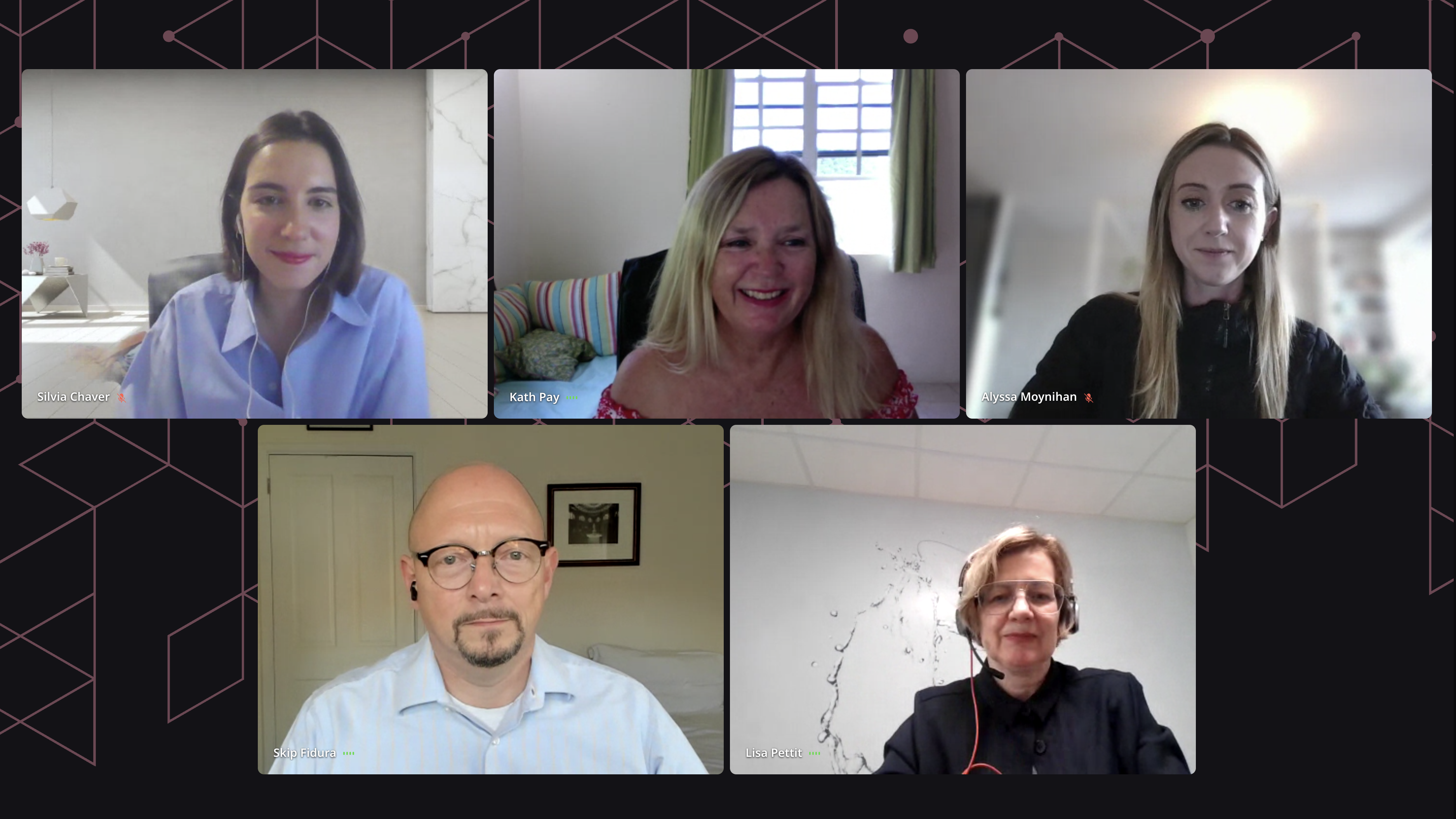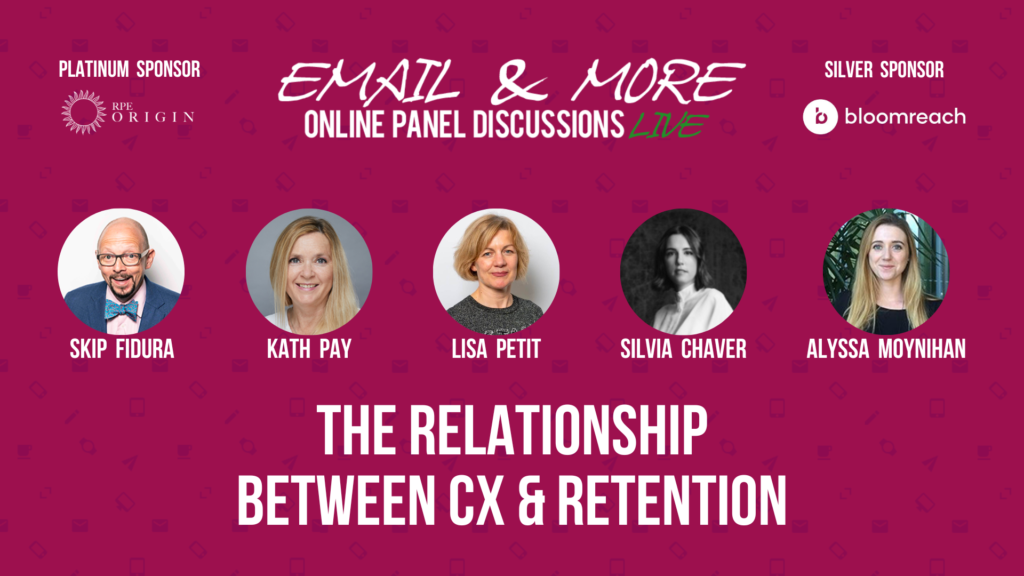Customer Experience and Retention
The panel was unanimous – as much as possible emails should strive to make recipients feel special by addressing their particular needs while making things as simple as possible for them to get through.
“Customer experience is not just at the checkout or when choosing a delivery slot, but at every touchpoint that you share with your customers and prospects”. So began our 17th October 2023 episode of Email and More. The topic: The Relationship Between Customer Experience (CX) and Retention. Our panel of special guests and industry experts cast their professional eye to give their opinion on why Email Marketers need to be more aware of this crucial factor in their work.
After all, we’ve all received that email, (or sometimes many emails) that have made us think less of whoever sent them to us. So how do you make sure your customers have a good experience and stick with you? That’s what our panel of special guests and industry experts came together to talk about.
Joining us for this episode of Email and More we were privileged to welcome the following:
- Silvia Chaver, Digital & CRM Manager, LVMH Fragrance Brands
- Lisa Petit, CRM Lead Developer, Specsavers
- Alyssa Moynihan, Global Email and Automation Specialist, UNICEF
Together with series regulars Kath Pay, CEO/Founder of Holistic Email Marketing and moderator Skip Fidura.
Customer Experience – Why It Matters for Email Marketing
As a marketing channel, email is uniquely positioned to reach out to people whether they be established customers or distant prospects. Often it is the only ongoing contact an organisation will have with potential clients and is the starting point for a growing relationship. It starts the “Journey from prospect, to lead, to customer to retained customer to loyal customer” as Skip explained.
This frequency of contact is why it’s so important to make sure you’re making a good impression. Mistakes happen, but people notice. Too many mistakes (or too big a mistake) and recipients will start to lose trust or may step away completely. “If you send me an email with a spelling mistake, I begin to lose faith in your brand’s ability to deliver quality” Skip stated. “If you send me an email with personalisation errors, I immediately lose all faith in your brand’s ability to keep my data safe”.
But just as a bad experience can put customers off, great experiences will nudge a contact along the road to becoming a loyal customer, or at least taking action. In the physical world many companies do this by providing loyalty programmes. Email however provides an opportunity to build customer relationships that would be prohibitive to try otherwise.
“I adopted my cat from an adoption centre,” said Alyssa. “The emails afterwards would mention my cat by name. They would ask for updates on how she was doing even sometimes saying that she’s been with you for a while and how they want to hear more about her”. Further calls inquiring about her cat’s well being and the deep personalisation of the charity’s contact turned Alyssa into a donor. “I’m still a loyal donor,” she admitted. “I have two cats from there now”.
Pampering In, Thinking Out – Building Great User Experiences
But as important as great personalisation can be to an email, what can be even more important is great service. “I’m spontaneous” said Kath when mentioning businesses like Amazon and Booking.com. “I want whatever’s easiest or simplest. Give me three steps, not five steps. Make my life easy and I will be loyal to you because you’re giving me back time” Removing barriers to a customer getting what they want and being easy and reliable builds loyalty, even to the point of customers paying a bit more rather than take a chance on a competitor. “I won’t bother going anywhere else because I’ve already got a relationship with them.” Kath explained.
Mentioning Steve Krug’s book “Don’t Make me Think” Silvia explained that while making things easy is great, it’s essential, especially for high price points and luxury goods and services special focus must be made on making the client feel important. “At every point of the shopping journey, they have to feel unique. They have to feel special” Silvia informed us. “When I’m selling a product that has a certain price point, and includes brand values as well as a sense of uniqueness and luxury it’s crucial on the digital side during the shopping journey”.
Customising emails to pamper to, and make things easy for, contacts is one thing. But when one isn’t selling a good or service it can be trickier. Working for UNICEF, Alyssa advised that personalisation towards individual donors is essential in keeping their support. “A lot of the time, the reason why people are donating to a cause is for a very emotive reason” she says. “So obviously we want to be able to make them feel like they’re making an impact.”
Shaping a Customer’s Experience Through Email
“Email is unique because it’s a push channel and a relationship-based channel” Skip declared. “You can tell a story over multiple emails. You don’t have to do it all in one shot.”
“It’s also a permission-based channel,” Kath added. “They have a need, a want, a desire. And what we need to do is understand their motivations, their needs and wants, and fulfil them. Under that basis, every email we send should be a helpful email”.
So how can an email marketer be helpful? As with everything else in 2023 AI may be the answer. “We’re in the middle of a project to test recommendations with AI” Silvia explained. “We’re trying to use the technology to replicate being a person of confidence. To say we know who you are, and we’ve chosen these products for you”. In other words, using technology to take the place of the helpful shop assistant over email.
While often not directly a marketer’s responsibility, ensuring that your website can cash the cheques your email is writing is also an important step. Several of the panel mentioned how frustrating things could be when promotions in an email didn’t link to the item direct in a store. Or having to copy out information again that the organisation should have already had.
Ensuring that websites work with the marketing team is key to ensuring a fluid journey for the customer. Commenting on a promotion for a clothing retailer that targeted men’s spouses, Skip related how the emails, when clicked through, would automatically populate the recipient’s shopping basket on the website. “Talk about convenience. All I have to do is choose size and maybe colours”
“What is your data telling you?” advised Lisa. Explaining how during her time at the BBC she demonstrated that through the data given by your customer it’s possible to identify a cohort of undiscovered potential prospects. She gave an example of viewers of a Football TV show who might also be fond of cookery shows, an unexpected crossover. “If you look under the bonnet, what you might find about your customers may surprise you”.
The full episode of Email and More: The Relationship Between CX and Retention can be watched on-demand.
We’d like to thank our Platinum Sponsor RPEOrigin and Silver Sponsor Bloomreach for their support in making Email & More season 4 possible.




